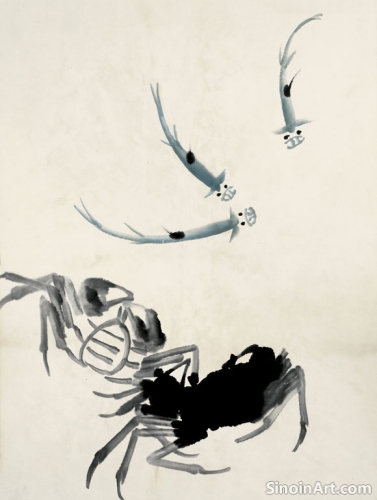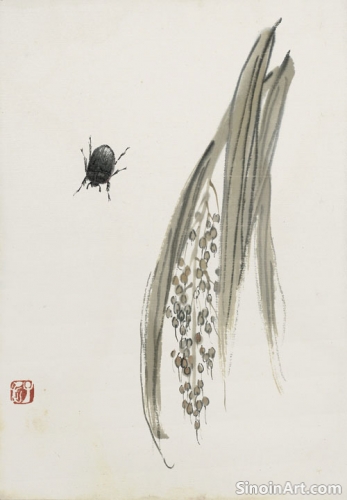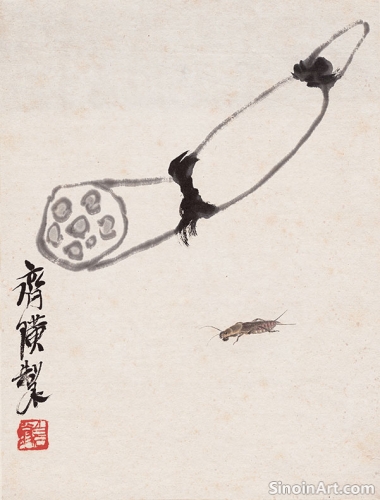The Importance of "Dry Brush" in Xieyi
|
The "Dry Brush," or kěbǐ (渴筆) technique, is an essential aspect of Xieyi brushwork, involving the use of a brush with minimal ink and water. This technique creates lines and textures that are broken, scratchy, and uneven, adding a distinct visual character to the artwork. The dry brush can add a whole new dimension of texture and expressive power.  Dry brush strokes are particularly effective for depicting rough surfaces, such as rocks, tree bark, and withered branches, allowing artists to create a sense of texture and three-dimensionality. The irregular lines and textures add a raw and natural feeling. It is a valuable tool for recreating the textures found in the natural world.  The use of "dry brush" can also convey a sense of age, decay, and the passage of time, making it especially suitable for depicting old buildings or landscapes that have been weathered by the elements. It’s often used to suggest the effects of time and the elements.  The "dry brush" also adds to the overall spontaneity and expressiveness of Xieyi, as the strokes are often less controlled and more unpredictable, adding a layer of organic energy to the painting. The dry brush offers a unique way of approaching the application of ink, it is inherently more spontaneous and less controlled. Mastering the "dry brush" requires a sensitive hand and a deep understanding of the materials. It takes practice to learn how to control the brush and create strokes that are both expressive and purposeful. The practice of the dry brush allows the artist to explore the texture of the ink itself. |
Tag : Dry brush technique, textured brushwork, Xieyi texture, ink wash technique
Related information
- Xieyi Painting and the Depiction of Water
- Modern Interpretations and Contemporary Xieyi
- The Influence of Zen Buddhism on Xieyi Painting
- Early Development of Xieyi: Song and Yuan Dynasties
- Xieyi Painting and the Use of "Contrasting Ink"
Water is a versatile subject in Xieyi, depicted through washes and expressive brushstrokes to convey fluidity, transparency, movement, and its symbolic connection to life, change, and nature, adding atmosphere and depth to landscape paintings, with varied forms representing a spectrum of feeling and power.
Modern Xieyi painting is adapting to contemporary contexts through incorporating new techniques, subject matter, and philosophical ideas, while remaining grounded in the core principles of spontaneity, expression, and the pursuit of qi, and pushing its boundaries into the modern art world.
Zen Buddhism has had a significant influence on the philosophy and practice of Xieyi painting. Zen’s emphasis on mindfulness, spontaneity, and direct experience resonates deeply with the core principles of Xieyi art. The relationship between Zen and Xieyi art is profound and ongoing.
The roots of Xieyi painting can be traced back to the Song Dynasty (960-1279), when scholar-officials began to develop a distinctive style of painting that reflected their unique values and aesthetics. The emphasis shifted from courtly patronage to individual expression, setting the stage for the emergence of Xieyi.
"Contrasting Ink" (nóngdànmò) in Xieyi uses both dark and light ink strategically to create depth, volume, texture, and atmosphere through visual contrast, with dark ink creating boldness and light ink adding distance and subtlety, requiring skilled blending to create tonal gradations, expressive depth, and nuanced interplay of light and shadow.